[Enjoy this guest post by Richard Herbert. – Ed.]
In Anti-Oedipus: Capitalism and Schizophrenia Volume I, Gilles Deleuze and Felix Guattari make an observation regarding Proust’s novel In Search of Lost Time. See if it you catch any parallels to contemporary cinema:
We are struck by the fact that all the parts are produced as asymmetrical sections, paths that suddenly come to an end, hermetically sealed boxes, noncommunicating vessels, watertight compartments, in which there are gaps even between things that are contiguous, gaps that are affirmations, pieces of a puzzle belonging not to any one puzzle but to many, pieces assembled by forcing them into a certain place where they may or may not belong, their unmatched edges violently bent out of shape, forcibly made to fit together, to interlock, with a number of pieces always left over. It is a schizoid work par excellence.
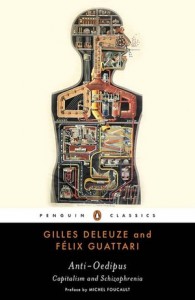 Deleuze and Guattari use the terms “schizoid” and “schizophrenia” to describe the condition of recognizing the unity of all things in the universe, of seeing everything as an interrelated process of production. A schizophrenic is unable to distinguish between human and nature, or human and machine, or nature and machine. To Deleuze and Guattari, “there is no such thing as either man or nature now, only a process that produces the one within the other and couples the machines together. Producing-machines, desiring-machines everywhere, schizophrenic machines, all of species life.”
Deleuze and Guattari use the terms “schizoid” and “schizophrenia” to describe the condition of recognizing the unity of all things in the universe, of seeing everything as an interrelated process of production. A schizophrenic is unable to distinguish between human and nature, or human and machine, or nature and machine. To Deleuze and Guattari, “there is no such thing as either man or nature now, only a process that produces the one within the other and couples the machines together. Producing-machines, desiring-machines everywhere, schizophrenic machines, all of species life.”
This inability to distinguish between forms, of seeing only the processes that produce those forms and not the forms themselves, is where we find our correlation to modern films. While that probably doesn’t make any sense up front, you have to keep in mind that Hollywood is currently defined by franchises–franchises whose movies are, by nature, contiguous. What’s more, many of the franchises themselves have become contiguous and interlocking, as we can see with The Avengers and upcoming Justice League films. “Spinoffs” used to be a relatively rare thing, a sign of desperation to milk a brand or keep a copyright, almost universally mocked (remember Elektra and Catwoman?). Now spinoffs are part of a complex studio marketing strategy, a way for movies to be both movies and advertisements; a way to increase apprehension and excitement for the massive ensemble features released every few years. This strategy is, to say the least, extensive.
Like a six-year-old mapping out a make-believe business model, Marvel and Warner Brothers (who own DC Comics) have announced release dates and development plans for 29 superhero movies over the next six years. Franchise films, risen from the formerly niched comic book world and into the mainstream like an ominous geek prophecy, now enjoy near sole ownership of the Hollywood spring and summer. With domestic sales waning (international box office returns are often well above 50% these days), the trend of supplanting mid-budget dramas and comedies with huge, crowd-pleasing conservative tentpoles, accessible across a breadth of cultural markets, is very likely to continue. Who knows? Perhaps by 2020, the Oscar season will, too, be dominated by capes and masks.
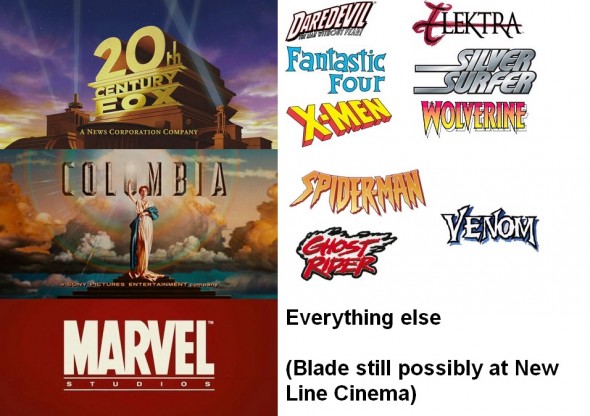
I would be remiss to forget Disney, proud owner of the Star Wars property, who plans to release (at least) one canonical film a year, starting in 2015. Coupled with the ongoing Star Trek and James Bond franchises, a promissory note for two more Avatar films, and god knows what Michael Bay has up his sleeve, the new American cinematic myth factory has yet to reach the apex of its production.
Is “myth” the appropriate word for these types of stories? If a myth is defined as either a widely told foundation story or a very popular false belief, neither seems to properly describe our new fixation with caped crusaders, masked avengers, and sci-fi heroes: fictional characters more metaphorical than mythological, and not presumed by anyone to be real, in the traditional sense of the word.
Yet, they are paragons, gods in their own right, characters loved or envied by millions of people around the globe, who cherish them as an intense personal property, something they keep deep within themselves to be nurtured and cultivated. While all comic book characters do evolve, and in different ways across varying universes, there must remain a core, a foundation, and ideological assemblage impervious to change. Batman must always be Bruce Wayne, and Bruce Wayne must always be an orphan, a disaffected icon of wealth sacrificing his pride and body in secret for the sake of Gotham. Take away those elements and Batman is just a strange man in a silly suit.
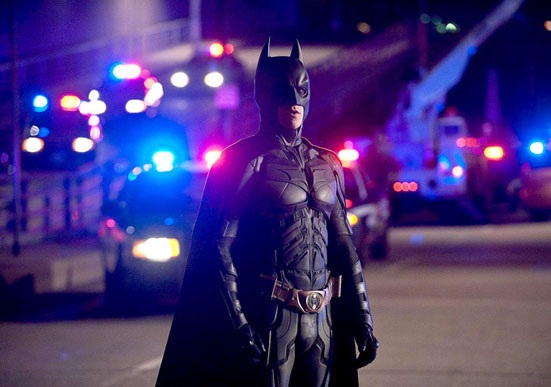
A strange man in a silly suit.
So already we have a sense for superheroes’ agelessness, their mythic quality which resists conclusion or catharsis. The catharsis is their conception; their existence in the first place. And these existences have become highly monetized, plagued by copyright battles and reboot potential, further extending the lifespan of comic book characters into the foggy offing of the Comic Book Bubble. The inability for superheroes to complete their narrative journeys is our first insight into the schizophrenic processes surrounding them, but first we must examine the systems that sustain their distribution.
Desiring-machines are binary machines, obeying a binary law or set of rules governing associations: one machine is always coupled with another. The productive synthesis, the production of production, is inherently connective in nature: “and . . .” “and then . . .” This is because there is always a flow-producing machine, and another machine connected to it that interrupts or draws off part of this flow…Desire constantly couples continuous flows and partial objects that are by nature fragmentary and fragmented.
While Hollywood has always been more of a business than an artistic collective, the mechanized enfranchisement of its spring and summer blockbusters have turned it into a self-sustaining, asymptotic dynamical system, emerging from the interactions between smaller, chaotic feedback-based systems: the studios. Marvel, DC, and Disney will now use a model, or cinematic algorithm, for their film lineup, in which the solution to the previous equation feeds into the next. Thor sets up The Avengers, The Avengers sets up Captain America: The Winter Soldier and Thor: The Dark World, and these films set up further films still. While planned out to a certain date now, and presuming this pattern continues, Marvel’s feedback-based algorithmic model projects chaotically into the future while simultaneously depending on the past. Iron Man IV cannot be made without The Avengers II, and The Avengers II cannot be made without Captain America: The Winter Soldier. Predicting the plot of Iron Man VI would require knowing not only the plot of Iron Man V, but likely all other Marvel films up to that point as well.
Considering all the variables present, the narratives of superheroes become truly unpredictable when viewed beside the practical implications of planning movies too far in advance. A studio can write out the synopses for every film for the next fifty years, but there are too many uncertainties to know with much accuracy if, first, they will even be made, and secondly, how closely they will resemble the initial prediction. Thus, the Hollywood franchise model is less randomized than a model dominated primarily by original films and localized sequels, which is good for financial stability, but it nonetheless acquiesces to chaos and unpredictability as soon as practicality is concerned.
Art often takes advantage of this property of desiring-machines by creating veritable group fantasies in which desiring-production is used to short-circuit social production, and to interfere with the reproductive function of technical machines by introducing an element of dysfunction.
So we have a cinematic system that uses narrative feedback to predict future outcomes, what I call the American Myth Factory (AMF), but as a fundamentally monetary endeavor, it nonetheless depends on the cash of filmgoers (Deleuze’s “desiring-machines”) to sustain it. However, the interaction between filmgoers and traditional Hollywood was much different than filmgoers who now interact with the AMF. Whereas the cinema of the nineties and prior largely promised films that would both entertain and provide catharsis within the space of two or three hours, the AMF is what Deleuze would call a “production producing process.” The product is no longer a film or films, but the influx of films, the making of more films and the making of making of films. Yes, villains in the AMF will occasionally be bested, but often they will merely be defeated temporarily, ready to wreak more havoc in the next installment. Our heroes will perennially learn lessons and grow, but never enough to perturb their foundational system or throw them off their emotional epicenter, something we might expect of more complex characters.
In this sense, the raison d’etre of the new Thor film will not necessarily be for the hero to save the day, or for a sly political allegory to be made, or even for entertainment to be had. For many, especially the studios, the new Thor will simply set up more Thor, another Avengers, introduce new characters in the hopes they will get a bigger role in the next film or spinoff of their own. Catharsis must always be delayed, because the catharsis of the superhero production process is the production process itself. Our gods are, in many ways, like the gods of ancient Greece and Rome: if you cease retelling their story, if you cease amending and augmenting and piling more on top, they may very well disappear. Like the table made by the schizophrenic, as noted in Anti-Oedipus, “it was a table of additions, much like certain schizophrenics’ drawings, described as ‘overstuffed,’ and if finished it was only in so far as there was no way of adding anything more to it, the table having become more and more an accumulation, less and less a table…with so little relation to the clumsy framework that the thing did not strike one as a table, but as some freak piece of furniture, an unfamiliar instrument … for which there was no purpose.”
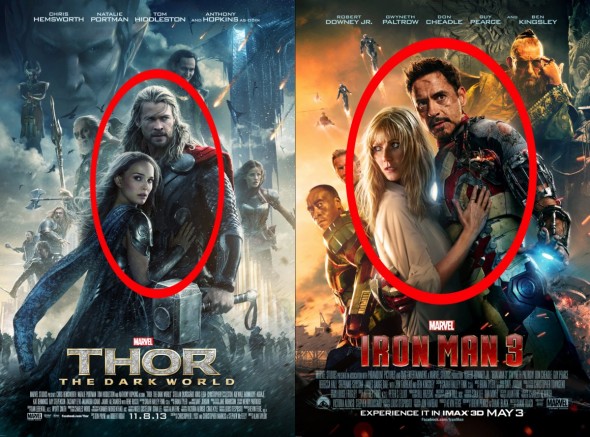
This makes filmgoers intrinsic in a schizophrenic marketplace no longer demarcated into specific products, or films, but a flux, a flow, an ongoing narrative that, like a TV serial, never promises to stop. If and when it does stop, it will be due to entropy, not intention—the monetary stream will dry, the actors will tiredly move on, the energy required will dissipate and slow. Whereas narrative films used to be the result of such a system, products the factory churned out to be enjoyed with some separation from their manufacturing process, now the manufacturing process is inherent in the narratives themselves. Watching Batman vs. Superman: Dawn of Justice will be watching the initial production stages of the Aquaman, Wonder Woman, and Batman spinoffs, and those the first Justice League film.
To Deleuze and Guattari, the schizophrenic is “the universal producer.” There is “no need to distinguish here between producing and its product. We need merely note that the pure ‘thisness’ of the object produced is carried over into a new act of producing.” By seeing every new film as a stepping stone to the next one, Marvel, DC and Disney may very well cease to differentiate between any particular story and the next. At any given time, a DC film will now both be a Justice League film, as well as a Superman film, as well as a Batman film, as well as a Wonder Woman film. The studio will be subsumed by its own stories; like the schizophrenic, it will no longer distinguish between the process and the product, the production and the catharsis. All will be production; all product, a process.
In desiring-machines everything functions at the same time, but amid hiatuses and ruptures, breakdowns and failures, stalling and short circuits, distances and fragmentations, within a sum that never succeeds in bringing its various parts together so as to form a whole.
To chart the interactive plotlines of the upcoming Marvel, DC and Star Wars films, all of which will have foundational trilogies with solo pictures branching off in varying directions, will be an equation likely to become intractable by any casual filmgoer. Remembering the significance of all the cameos in Marvel’s Guardians of the Galaxy is hard enough, let alone doing this for three or four separate cinematic universes. And for all of this complexity, in the literal meaning of the word, there remains a comforting sense of everything functioning concurrently, at the same time, in the same universe. Yet there remains no easily graspable, emotionally susceptible whole for us to project our catharsis onto. If there is no longer any truly isolated narrative, then is there also no longer any truly isolated cinema? The desire to escape the world into a separate universe is curtailed by the universe insisting itself frequently and violently upon us.
To participate in the film world, in any competent sense, is to be unwittingly part of this new schizophrenic cinematic process, the one by which the studio model will soon entirely be defined. How long will it be before all films made by all studios share the same universe, share our universe? When will the distinction between the world of cinema and the human world find a similar mechanism of sameness, of flow? The transformation of art from a product producing process into a production producing process means embracing a model where “every object presupposes the continuity of a flow; every flow, the fragmentation of the object.”
I could go on, but that would spoil the post-credits sequence. We wouldn’t want that, would we?
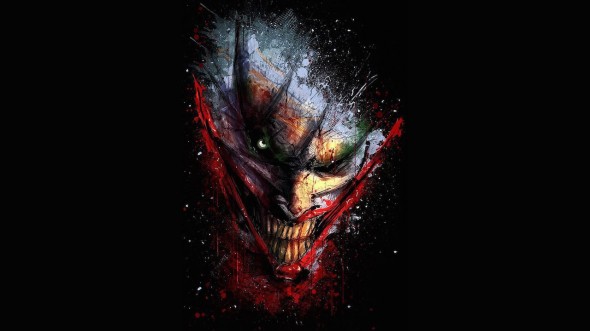
Richard Herbert is a freelance marketing writer and film geek in Portland, who spends most of his time drinking coffee and over-analyzing pop culture.
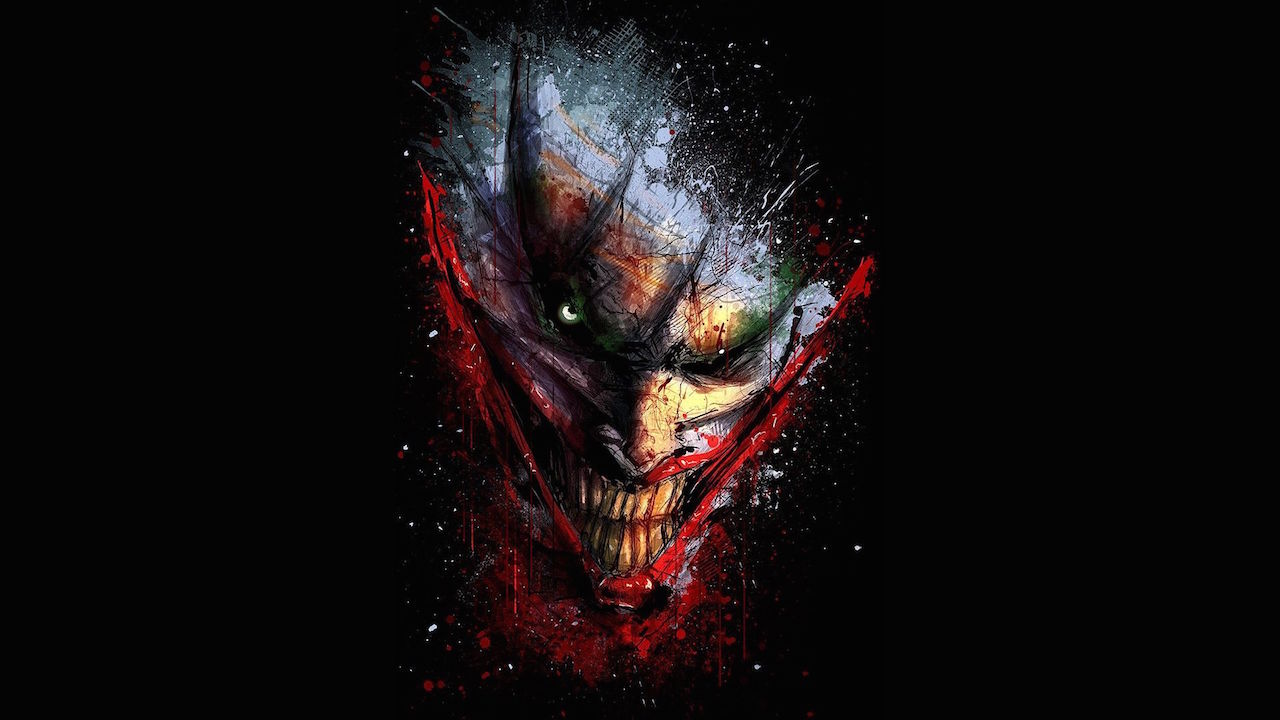
To be a little fair to Hollywood, these sorts of franchises are nothing new. There are over 40 Charlie Chan and “Bowery Boys” movies, and a total of 66 “Hopalong Cassidy” flicks. The difference between that era and now is that those were programmers designed just to have something on the screen (that was before the days of television, mind you) and not make-or-break blockbusters.
Yeah. Franchises themselves aren’t new, but only recently have they become the pop culture zeitgeist in movies. And (this would be interesting to do research on) other than one-offs like Frankenstein Meets the Wolfman, I’m not sure if there has been any other time when varying franchises all shared the same universe.
” How long will it be before all films made by all studios share the same universe, share our universe?”
This would imply that there would be a Rom Com going on at the same time and the same world as an action movie. Surely studios wouldn’t even be that crass.
Well, perhaps not literally, but there are yet dozens of popular comic book and graphic novel properties able to intermingled into the respected universes, and I could see many of the more niched ones filling the comedy or lighthearted slots studios normally reserve for original, non-franchise films. Sure, I doubt there’s ever going to be Titanic: My Heart Will Go Ultron, but my point is mainly that franchises are filling the spaces of many different genres now, and I see no reason to think that trend won’t continue.
Romance literature constantly relies on phenomena outside the control of the protagonists, that either forces them together or keeps them apart. Weather is common (eg, storms, snow, ice bergs), as are accidents of various sorts, traffic problems, imperious or needy relatives, and so on.
Why not a city-wide showdown between superheroes and supervillains?
It’s a Nicholas Sparks book just waiting to happen!
Just a quick note: Daredevil and Elektra leases lapsed, so they’re back with Marvel, which is why they’re part of the MCU Netflix shows.
My gut also tells me that the Fantastic Four lease was actually renewed by the Arrested Development use of those characters in season 4. Which is pretty hilarious. They were definitely running out of time, and AD got them in under the wire.
We’ve recently seem some bad results with this system, such as Edgar Wright’s departure from Ant Man, a film he had been working on for 8 years and when the Marvel executives started implimenting changes to make it more cohesive to the overarching plot of their “universe” it forced Wright to leave and to send in a replacement director. Who knows how much of the remaining product still retains Wright’s influence and as one of the best directors working today (and one of my favorites)its a shame to see his vision marred by studio meddling. Of coruse Studio meddling has always been a problem in the history if cinema but rarely have we seen it on this kind of scale. What’s more disheartening is something I read yesterday from Filmdrunk, where Evangeline Lilly basically apologised for Marvel’s overt control of the production, which basically made it sound as if she absolutely knew Wright’s film would be great but was comrprised for business reasons. Clearly she was saying just what the “machine” wanted her to say but its really sad when the film industry, which is supposed to be exciting and creative, becomes continually more redundant.
Marvel’s “vision” for their films, whatever that may be, is all bsed on formula to the point where the countless sequels will all gradually look and feel the same, despite the sucesful parts of their franchises being the most unique films such as Guardians of the Galaxy or Iron Man. Winter Soldier’s sucess largely resided on just being a Captain America movie and having a relatively tight knit plot, right up until the third act where it just became “explode all the things and activate boss battle.” don’t get me wrong, that part was cool, but it was pretty basic in its construction. Thor on the other hand has been the less sucesful of the crew despite the fame of Tom Hiddleston. Perhaps its overly CGI backdrop design and flighty “norse myths in space” design has left the fantasy series feeling somewhat generic and distant compared to the somewhat more grounded Iron Man and Captain America and the jokes and charisma galore of Guardians of the Galaxy.
In any case lets just hope Black Panther and Captain Marvel don’t end up like Catwoman or Elektra.
The Hypercrisis is real.
http://journal.transformativeworks.org/index.php/twc/article/view/442/397
So basically this has already happened: “How long will it be before all films made by all studios share the same universe, share our universe? When will the distinction between the world of cinema and the human world find a similar mechanism of sameness, of flow?”
I’d go so far as to propose that our increasing desire to find connections and references hints at the possibility that franchise superheroes and consumers are in fact in the same cultural universe. Meaning is replaced by connectivity as such in both cases. And this does not apply only to a select group of nerds on 4chan, but to the entire information technology generation. The way we process information by creating more and more links is similar to the condition of the franchise superhero and his inherent lack of catharsis.
And I’d say that genres only support the point further. All you have to do is read through the critic’s comments on Rotten Tomatoes to see how offended people get when genre boundaries are not respected. Films often (of course not always) get judged negatively purely for failing to be comparable. In a way, the Left-Right spectrum results in an imperative for political opinions to be recognizable. Identity-politics and hipster culture show how humans can even treat themselves as a collection of references. If everything is already comparable with everything, who is to say that there is no flow between the universe of the DC Comics and ours? If the logic of capitalism is present in all sorts of spheres of existence, then art and reality are not, technically, separate. I don’t mean that Batman is real, but that he exists beyond a designated realm of entertainment. His continuous reproduction may impact emotions and modes of thought in ways that are untracable but very much serious, be these stereotypes, patterns, language, whatever.